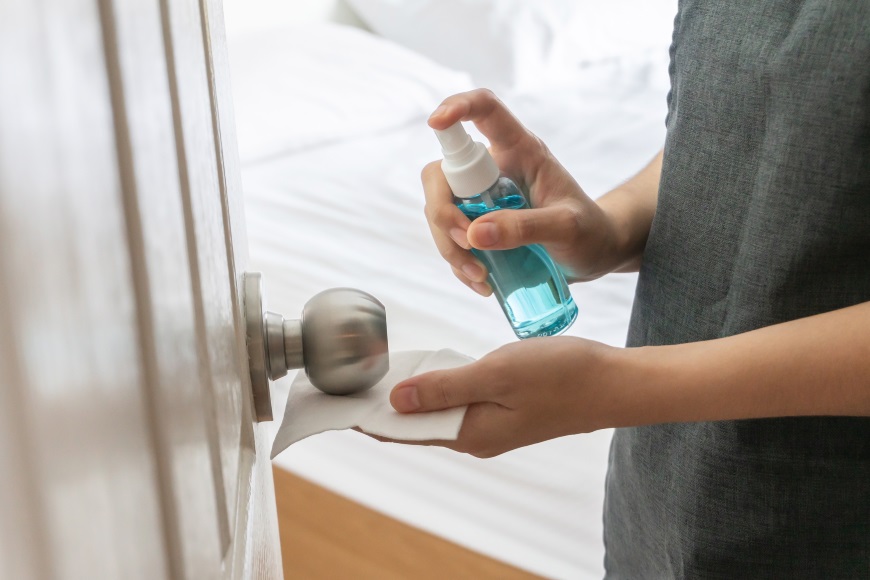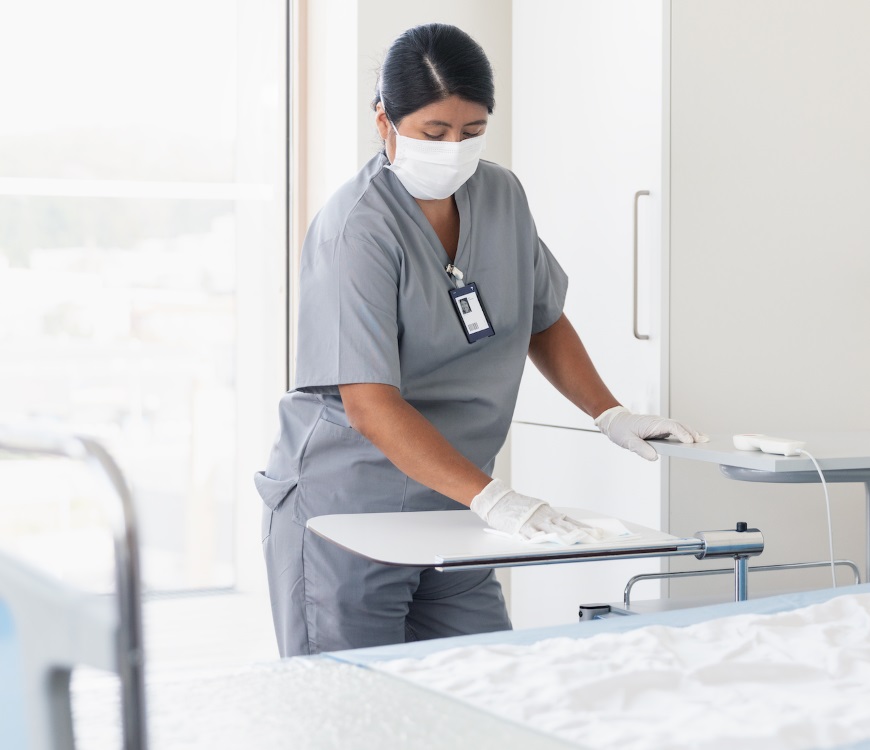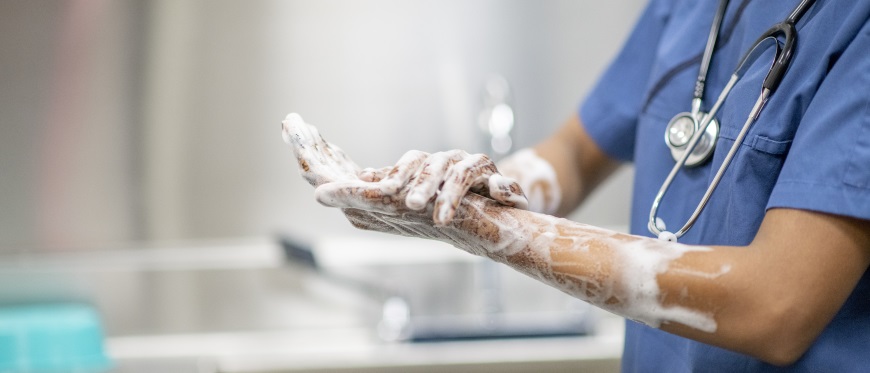Personal hygiene is of paramount importance in the healthcare sector. Microorganisms spread quickly in healthcare environments due to the amount of physical contact between professionals and patients. Add relatives and visitors into the mix, and it is easy to see why contagions such as the common cold, influenza and norovirus spread rapidly in healthcare settings like hospitals, pediatric centers and doctors’ offices.
Infection prevention and control is everyone’s responsibility. Maintaining personal hygiene can significantly reduce the risk of transmission and cross contamination of infections. Here, we explore the importance of personal hygiene in more detail.
What are Healthcare Associated Infections?

Healthcare Associated Infections (also known as HAIs or nosocomial infections) are infections that patients develop as a direct result of receiving healthcare or surgery. Occasionally, healthcare professionals may also develop HAIs. The Center for Disease Control estimates that in American hospitals, HAIs account for around 1.7 million1 infections and 99,000 associated deaths each year.
Not only do HAIs pose harm to the patient, but they also increase hospital stays, putting additional pressure on the healthcare system. Common HAIs include urinary tract infections, wound infections and soft tissue infections, respiratory infections and gastro infections that cause vomiting and diarrhea. Most of these HAIs are preventable.
There are many reasons why a patient may develop a HAI. Patients most at risk are those with chronic illnesses, those who are already predisposed to infections and the elderly. Over-use of antibiotics and complex surgical operations can also make contracting a HAI more likely.
How are Healthcare Associated Infections spread?
The healthcare sector commonly breaks the spread of HAIs into three steps. Firstly, an infectious agent such as bacteria, a virus, fungi or protozoa has to be present on a source such as a patient, healthcare staff, visitors or contaminated equipment. Secondly, for a HAI to spread, it needs a susceptible host, such as a patient with an underlying disease, or someone who has undergone complex surgery. Lastly, the spread of HAIs needs a means of transmission. There are various ways an infection can be transmitted. Direct or indirect physical contact between the carrier and the individual may be responsible – this type of transmission is the most common. If the contagion is a virus, it may result in airborne transmission after close contact with the patient. Food and water transmission (sometimes known as fecal-oral transmission) is another way that HAIs spread in healthcare environments.
How to prevent Healthcare Associated Infections

HAIs are a growing threat to patient safety in the United States and worldwide. Fortunately, basic infection prevention and control measures can help reduce the risk of infections. Environmental cleanliness, precautions during invasive procedures and educating staff, patients and visitors on the importance of hygiene are all simple and cost-effective measures that can help combat HAIs in any healthcare facility.
Of course, hand hygiene is the single most important factor in reducing transmission. Washing hands can prevent the spread of micro-organisms from one person to another in healthcare environments. The World Health Organization advises healthcare professionals to clean hands promptly and thoroughly between patient contact. It is also important to wash hands after contact with blood, bodily fluids, secretions, excretions and contaminated equipment. Doing this is essential to minimize the risk of infection in healthcare.
Did you know that 80%2 of healthcare professionals would like to improve their hygiene compliance? The Infection Prevention Society recommends effective hand hygiene involving the use of liquid soap and warm water which can be used to manually remove micro-organisms from the hands. Hand soap, water and paper towels should be readily available to encourage hand hygiene. Sinks for handwashing should be used for only that (and not for washing other common patient items such as crockery or dentures).
A certified alcohol-based hand sanitizer product can also be used for general hand hygiene. It may be used in place of a liquid soap and warm water if hands are visibly clean. Optimal dispenser placement of sanitizer products can help encourage hand hygiene compliance and increase usage by more than 50%3.
A note on environmental cleanliness
While hand hygiene is the most important and effective means of infection prevention and control in the healthcare sector, contaminated surfaces also play a huge role in the transmission of infections. Dangerous pathogens such as MRSA and Clostridium difficile are examples of dangerous pathogens that are capable of long-term survival on surfaces.
Thorough cleaning of surfaces and equipment that healthcare staff and patients touch is paramount to preventing the spread of such infections. Surfaces and objects that are touched frequently such as bedside tables, door handles, taps and light switches are likely to harbor and transmit micro-organisms. It’s important to ensure these surfaces are cleaned and disinfected regularly in line with regulations for cleanliness to keep everyone safe.
Sources
1 Patient Care Link: HAIs
2 Tork: Fight HAIs with hand hygiene
3 Tork: Dispenser placement
